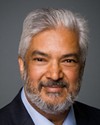Thank you, Mr. Chair, and through you, thank you, General, for coming today.
Like Mr. Strahl, I have ancestors from the RCAF. My father joined the RCAF in 1942, and ended up as a navigator in a Lancaster bomber until the end of the war.
I want to come back to the issue of F-35s. This is no surprise, I'm sure, to those opposite. Mr. Strahl has already anticipated this. On our side of the House, we stand up and ask questions fairly frequently about the F-35, and it usually ends up with our asking government when they're going to put this contract out to tender. It is our hope that at some point in time, given all the news that's coming out of the United States with respect to the F-35, that's what this government will do.
In the meantime, the question for you, General, is why did this particular contract never go out to tender in the first place?




